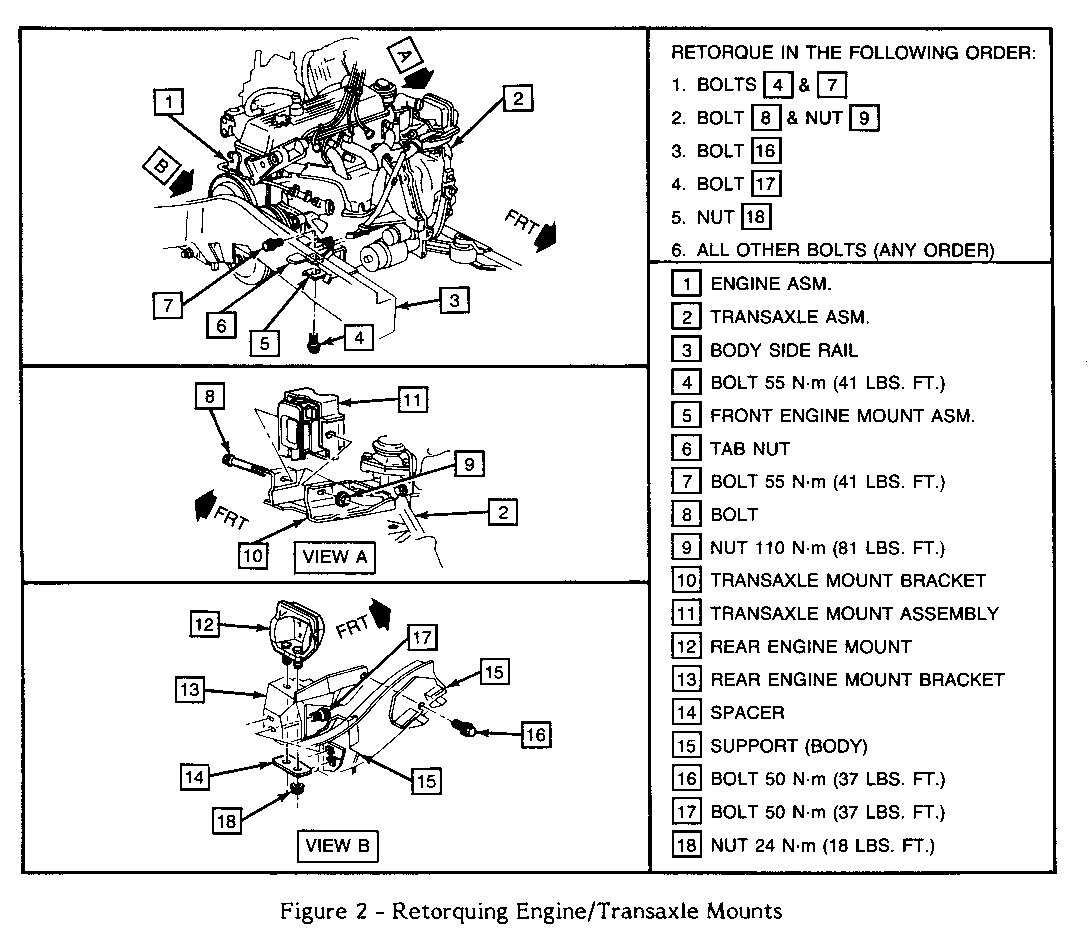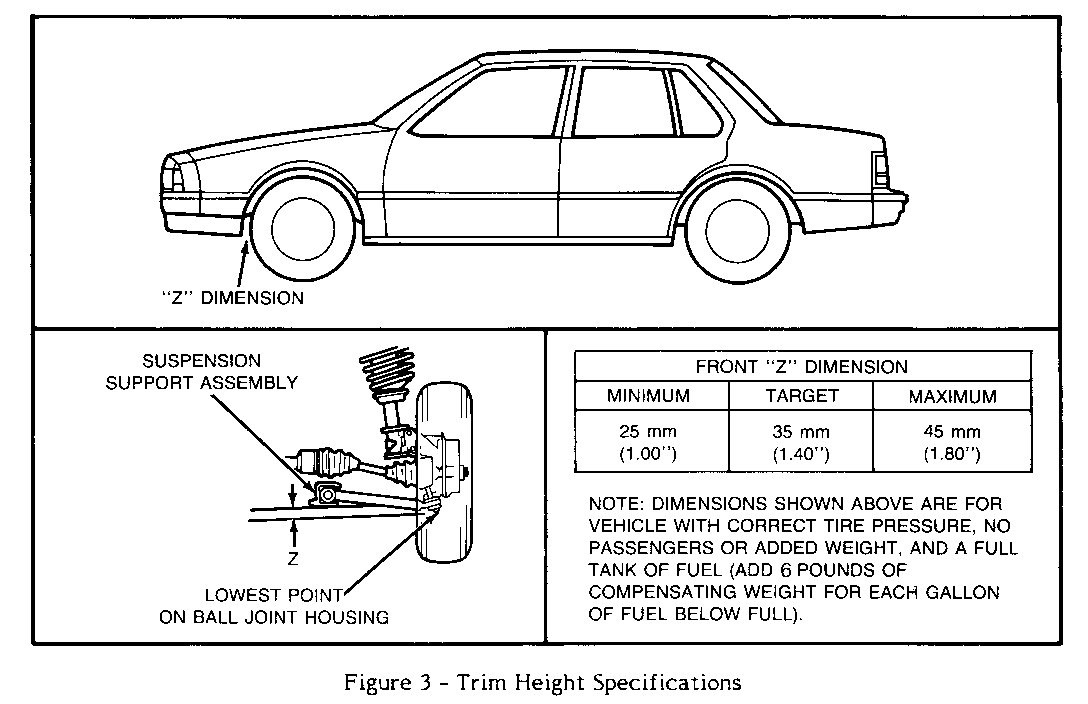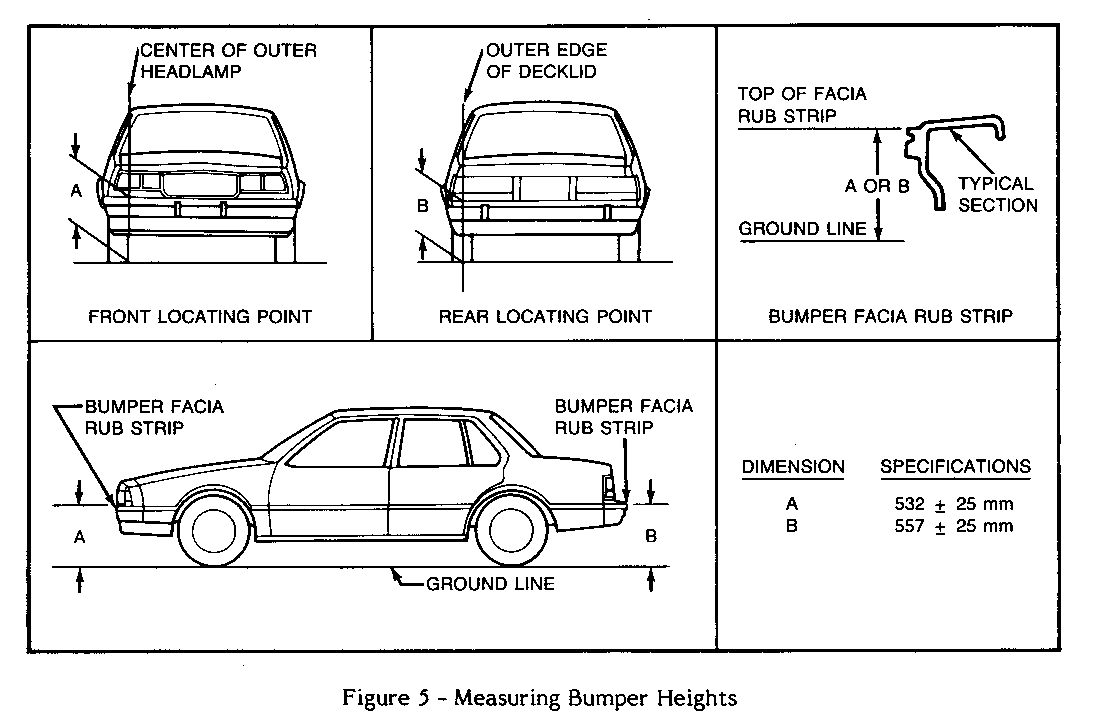ACCELERATION NOISE/SHUDDER REPAIR PROCEDURES

MODELS AFFECTED: 1995-1986 V-6 CIMARRONS
Some 1985 and 1986 Cimarrons equipped with 2.8L V-6 engine may experience a vibration or shudder condition on hard acceleration as the vehicle reaches peak engine power and the suspension is at top of lift. The vibration or shudder goes away as vehicle suspension settles. This condition may be caused by increased drive axle angle during acceleration. To repair this condition, perform the "initial checks" then, if required, install new springs as outlined in this bulletin.
INITIAL CHECKS
- Check tire pressures. Check for a mispositioned engine/transaxle assembly as follows. If measurements A & B, see Figure 1, are not within 6mm (1/4 inch) of each other on automatics or 3mm (1/8 inch) on manuals, the engine/transaxle assembly needs to be repositioned. To reposition, loosen all engine/transaxle mounts, jounce engine/transaxle assembly, and retorque as outlined in Figure 2.
- Check that engine and transaxle mounts are tight.
- Check for tight, left hand, inboard driveaxle joint as follows: Disconnect left inboard joint from transaxle. Simulate the angle while moving the joint in and out. If joint binds, replace joint.
REPAIR PROCEDURES
1. Check spring ID codes to be sure correct springs are on car. Refer to Figure 3.
2. Check trim height "Z" dimension, refer to Figure 3.
o If "Z" dimension is at the target or below (35 mm or lower) replace front suspension springs with those listed in "level 1 repair" of Figure 4.
o If front trim height "Z" dimension is above the target (greater than 35 mm) replace all springs with those listed in "level 2 repair" of Figure 4.
CHECKING BUMPER HEIGHT
Remove everything except jack and spare tire assembly from trunk. Make sure vehicle has a full tank of fuel or add compensating weight (one gallon of fuel weighs approximately 6 pounds). Set tire pressures to 28 PSI (if equipped with 13 inch wheels and tires, set tire pressure to 35 psi, refer to tire placard on the rear face of the driver's door). Jounce front and rear of vehicle. Check bumper heights as outlined in Figure 5.
HEADLIGHTS ALIGNMENT
Check headlight alignment and adjust if necessary.
CHECK FRONT SUSPENSION ALIGNMENT
Check front suspension alignment and adjust if necessary.
WARRANTY
For warranty purposes, use the following Labor Operations:
o If front springs are replaced only, use labor operation T6178 at 2.3 hours, add .5 hours to adjust camber on one side, add 1.1 hours to adjust camber on both sides (includes filing).
o If front and rear springs are replaced, use labor operation T6179 at 3.0 hours, add .5 hours to adjust camber on one side, add 1.1 hours to adjust camber on both sides (includes filing).





General Motors bulletins are intended for use by professional technicians, not a "do-it-yourselfer". They are written to inform those technicians of conditions that may occur on some vehicles, or to provide information that could assist in the proper service of a vehicle. Properly trained technicians have the equipment, tools, safety instructions and know-how to do a job properly and safely. If a condition is described, do not assume that the bulletin applies to your vehicle, or that your vehicle will have that condition. See a General Motors dealer servicing your brand of General Motors vehicle for information on whether your vehicle may benefit from the information.
